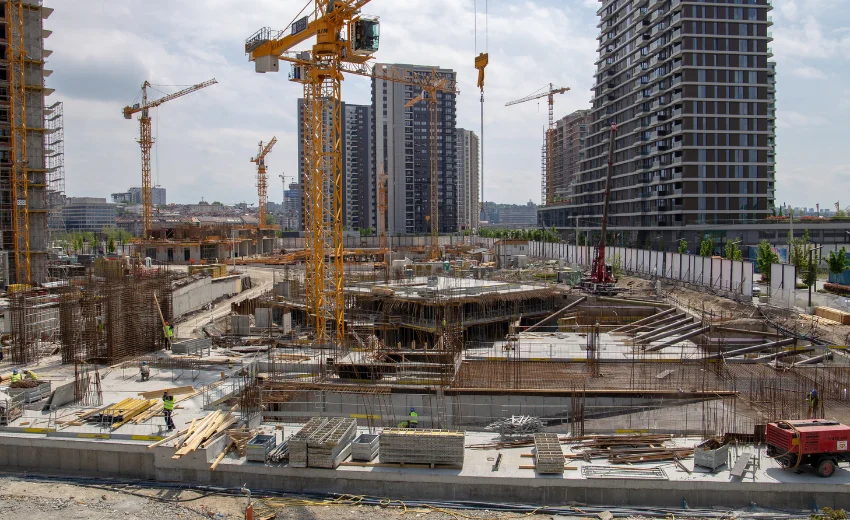The construction industry is one of the most dynamic and rewarding sectors, driving the creation of homes, infrastructure, and commercial spaces. However, it’s also one of the most challenging. From managing tight schedules and budgets to navigating labor shortages and regulatory hurdles, construction business owners and managers face obstacles that can make or break their success.
These challenges can be daunting but also present opportunities for innovation, growth, and improved efficiency. By understanding these common hurdles and learning how to address them, construction professionals can build resilient businesses that thrive despite adversity.
This article delves into some of the most common challenges in the construction industry and provides actionable strategies to overcome them.
- Labor Shortages and Skilled Workforce Challenges
One of the most pressing issues in the construction industry is the need for more skilled labor. As experienced workers retire and fewer young people pursue construction careers, companies often need help finding qualified personnel.
How to Overcome It:
- Invest in Training Programs: Offer apprenticeships and on-the-job training to upskill new workers and make your company attractive to those seeking career growth.
- Embrace Technology: Automation and advanced tools like robotic bricklayers or construction drones can help offset the labor gap.
- Improve Recruitment Strategies: Partner with trade schools and vocational programs to attract fresh talent. Highlight career opportunities and benefits in your marketing efforts.
Focusing on workforce development solves labor shortages and fosters employee loyalty and satisfaction.
- Budget Overruns
Budget overruns are a common challenge in construction projects. Unexpected costs, inaccurate estimates, and poor financial planning can strain resources and delay project completion.
How to Overcome It:
- Adopt Cost-Estimating Software: Tools like Procore or Buildertrend provide accurate budget estimates and track expenses in real time.
- Plan for Contingencies: Always allocate a portion of the budget for unexpected expenses. A contingency reserve of 10-20% is generally recommended.
- Regular Financial Reviews: Monitor expenditures frequently to identify discrepancies early and adjust as needed.
Maintaining financial discipline and leveraging technology can keep projects on track and within budget.
- Tight Deadlines and Scheduling Conflicts
Construction projects often come with tight timelines. Delays in one phase can create a domino effect, leading to missed deadlines and dissatisfied clients.
How to Overcome It:
- Use Scheduling Software: Project management tools like Microsoft Project or Primavera can streamline task scheduling and resource allocation.
- Communicate Effectively: Regularly update all stakeholders, including contractors, suppliers, and clients, to ensure alignment.
- Factor in Buffer Time: Build extra time into your schedule to account for unexpected delays, such as bad weather or supply chain issues.
Efficient scheduling not only keeps projects on track but also strengthens client relationships.
- Safety Concerns on the Job Site
Construction sites are inherently hazardous; accidents can lead to severe injuries, project delays, and increased costs. Maintaining safety is both a moral and legal obligation for construction business owners.
How to Overcome It:
- Implement Regular Safety Training: Ensure all workers are trained in workplace safety protocols and proper equipment usage.
- Provide Quality Safety Gear: Equip workers with personal protective equipment (PPE) like helmets, gloves, and harnesses.
- Conduct Routine Inspections: Regular site inspections can identify potential hazards before accidents occur.
Prioritizing safety protects workers, minimizes liability, and enhances your company’s reputation.
- Supply Chain Disruptions
Supply chain disruptions—whether due to global events, material shortages, or transportation delays—can severely impact construction projects.
How to Overcome It:
- Diversify Suppliers: Relying on a single supplier increases risk. Work with multiple vendors to ensure a steady supply of materials.
- Order Materials Early: Placing orders well in advance can prevent delays caused by long lead times.
- Maintain Strong Relationships: Build strong partnerships with suppliers to negotiate better terms and gain priority during shortages.
A proactive approach to supply chain management helps mitigate delays and keeps projects moving smoothly.
- Regulatory Compliance
Navigating the complex web of building codes, permits, and environmental regulations can be overwhelming. Non-compliance can lead to fines, project delays, and even legal action.
How to Overcome It:
- Stay Updated: Regularly review changes in local, state, and federal regulations that affect construction projects.
- Hire Compliance Experts: Working with consultants or legal advisors can ensure your projects meet all requirements.
- Invest in Training: Educate your team on compliance protocols to avoid costly mistakes.
Compliance isn’t just about avoiding penalties—it also fosters trust with clients and stakeholders.
- Adapting to Technological Advances
The rapid pace of technological innovation presents a challenge for construction companies—many need help keeping up with the latest tools, software, and methodologies.
How to Overcome It:
- Start Small: Implement one or two technologies at a time, such as project management software or drones for site surveys.
- Invest in Training: Ensure your team understands how to use new tools effectively.
- Monitor ROI: Regularly evaluate whether your investments in technology are delivering tangible benefits.
Embracing technology enhances efficiency and competitiveness in a rapidly evolving industry.
- Environmental and Sustainability Concerns
As environmental awareness grows, construction companies face increasing pressure to adopt sustainable practices. Balancing eco-friendliness with cost-effectiveness can be a challenge.
How to Overcome It:
- Use Sustainable Materials: Opt for eco-friendly options like recycled steel, bamboo, or low-VOC paints.
- Minimize Waste: Implement waste management practices such as recycling and repurposing materials.
- Pursue Certifications: Achieve certifications like LEED to demonstrate your commitment to sustainability.
Green practices benefit the planet and enhance your brand’s appeal to environmentally conscious clients.
- Client Communication and Expectation Management
Miscommunication with clients can lead to disputes, dissatisfaction, and even project cancellations. Managing client expectations is essential for smooth project execution.
How to Overcome It:
- Establish Clear Contracts: Outline project timelines, budgets, and deliverables in detail to avoid misunderstandings.
- Maintain Transparency: Provide regular updates on progress, potential delays, and any changes to the scope.
- Be Responsive: Address client concerns promptly to build trust and maintain strong relationships.
Clear and open communication helps align client expectations with project realities.
Conclusion
The construction industry is rife with challenges, but each obstacle also presents an opportunity for improvement. By addressing labor shortages with training programs, managing budgets effectively, prioritizing safety, and embracing technology, construction professionals can overcome the hurdles that come their way.
Successful construction businesses don’t just react to challenges—they proactively seek solutions, foster innovation, and adapt to change. Applying the strategies outlined in this article, you can build a resilient business that survives and thrives in an ever-evolving industry.
Remember, every challenge is an opportunity to grow stronger. You can turn setbacks into stepping stones for success with the right mindset and tools.

